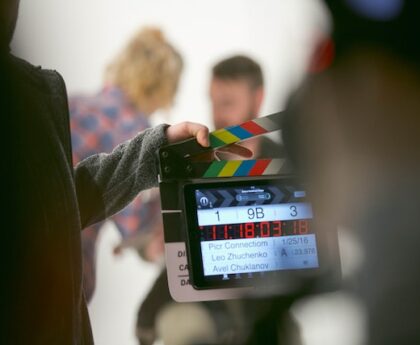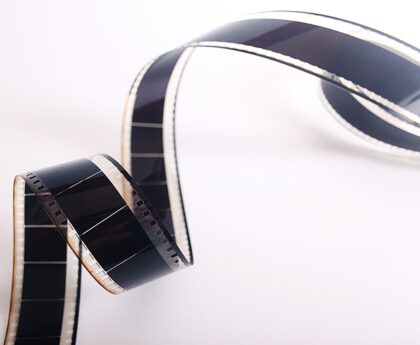You can shoot a vacation video with an action camera, an amateur camera, or even a camera. Even on a smartphone! What do Hollywood cameramen use to shoot wide-screen? In this article, let’s find out how masterpieces of visual art are created and what cameras are preferred in big cinema.
In 1895, one of the Lumiere brothers assembled the Cinematograph camera. And that’s when cinema took on a worldwide scale. Even then, people knew about animation and could make clips for a couple of seconds. And the Cinematograph made it possible to shoot video for almost a minute and immediately project them on the big screen. From that point on, people embarked on a journey to real big movies.
Filmmaking has come a long way from the cumbersome “Cinematograph” Lumière brothers to the compact and tricked out RED Epic. It all started with a short monochrome reels, and continues with large-scale scenes, which are stuffed with graphics and cool effects. Now the movie works wonders: monumental panoramic shots, driving road scenes and scenic statics. From frame to frame, the director can change tools: shoot complex stunts on modern digital, and the body of the film, with a lot of natural in the frame on good old-fashioned film. These are the cameras most often seen on star sets.
ARRI
Arnold & Richter Cine Technik (A&R), a major supplier of movie cameras since 1917. The popularity of ARRI began back in the “tube” era, and since 1995, all advanced studios have shot and are shooting on the ARRIFLEX 435, a 35mm film classic that has a huge number of films under its belt.
The camera can shoot from 1 to 150 frames per second, and it also has a reverse and electronic shutter. With such unique abilities at the time, it became so popular that even competitors from Panavision adapted their peripherals – optics, accessories – for it. The model was awarded a Science and Engineering Academy of America award in 1999. Its track record includes many Hollywood legends. For example, the “Lord of the Rings” trilogy, “Twilight,” “The Fifth Element,” “The Avengers.
ARRI Alexa
ARRI cameras only moved into the digital age in 2010 after the release of the Alexa model. Recently, it has been the most popular line of digital cinema cameras – they shoot high dynamic range footage with an emphasis on the proprietary RAW codec. The first model in the family has long been shooting successful projects, including Oscar winners “Green Book” and “Blade Runner 2049.”
PANAVISION
The second most popular company after Arri, which also makes professional film equipment. The brand was founded in 1953, and already in 1954 began to actively promote its systems on the market. It was a new format Panavision, which displaced the CinemaScope, which gave many distortions when shooting close-ups. In addition, the Americans had already won a place under the Hollywood sun, because they produced high-quality optics for camcorders from other companies.
RED
Once again, the Americans. The company began producing cameras since 1999, and the first “recognized” model RED One introduced only in 2007. At that time, the camera was just a camera – no better than the ARRIFLEX 435 or Panaflex. A small number of optional accessories and a lot of competition in the niche of film cameras made this model a device of the second plan.
Interest in this company appeared only after the release of the camera series RED Epic. These are compact and “independent” cameras, which are assembled and disassembled as transformers. In addition to the top characteristics of the sensor, as well as a unique range of peripheral equipment, the main advantage of these cameras was the “adult” stuffing at children’s size.
In many ways, this has influenced where and how these cameras are used in filming. Thus, the main task of the “reds” is to be in the epicenter of events. For example, riding on the trunk of a sports car and filming epic chases in “Fast and Furious 8.”
“Fast 8. RED Epic Dragon mounted on a trunk to shoot driving footage of a chase outside the National Museum of Mathematics in New York City
Epics are versatile digital cameras that already shoot 8K and still have the size of amateur equipment. Just what you need for small studios. And if necessary, they can go from a baby to a formidable weapon for a world-famous action filmmaker.
And what about the others.
Besides ARRI, Panavision and RED, the three elephants on which Western filmmaking rests, there are other manufacturers. But this trio is present, both together and separately, in almost every project. And it is not about the quality of the picture or the cost of devices. Here it is more a matter of habit. The main task of a director is to adjust a film not as a picture, but as a picture: sometimes it is easier to use old, but familiar technology, which does not interfere with the art of “creating”. That’s why so many projects are still coming out with the same ARRIFLEX 435 film, even though manufacturers offer much more modern devices with unique capabilities and cosmic characteristics.




